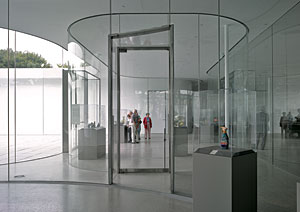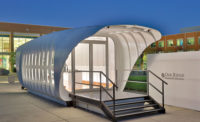If there were a prize for the project most often mentioned during the conference “Engineered Transparency: Glass in Architecture and Structural Engineering,” it would go to the Glass Pavilion at the Toledo Museum of Art, in Ohio, designed by SANAA [RECORD, January 2007, page 79]. The first to present the building was the Tokyo-based firm’s principal, Kazuyo Sejima, in her keynote address on September 26 for the two-day event at Columbia University, in New York City.

Several of the subsequent 30 speakers, including architects, consultants, and manufacturers, cited the one-story building that houses the museum’s collection of glass art, for its transparency, minimal structure, and seeming simplicity. New York City–based Guy Nordenson, the project’s structural engineer, discussed the pavilion as a manifestation of “infrathin,” a term coined by Marcel Duchamp, but used by Nordenson to describe structure that seems to disappear. The Toledo project’s immateriality is so pronounced that Nordenson joked he thought the plan was a bubble diagram when he first encountered it at SANAA’s offices.
Some compromise was necessary to make the diaphanous container a reality. Matthias Schuler, of Stuttgart-based environmental consultancy Transsolar, revealed it took nearly a year to convince Sejima of the need for curtains to shield ultraviolet light. “That’s the way of collaboration,” he said. “You don’t say ‘it won’t work’ and walk out the door.”
Transparency was not the only theme explored during the conference, which was sponsored by Oldcastle Glass and organized by Columbia’s schools of architecture and engineering, along with the Institute of Building Construction at the Technische Universitat of Dresden. Sessions discussed blast- and hurricane-resistant design, the energy efficiency of glass buildings, and materials research.
The deep examination of a single material revealed some ironies. According to Graham Dodd, a mechanical and facade engineer in the London office of Arup, many of the coatings used to enhance the thermal performance of glazing also hinder recycling. Robert Heintges, a New York City–based curtain-wall consultant, pointed out that frits and coatings can also be at odds with the goal of pure transparency. Heintges noted: “Each manipulation to enhance energy efficiency can render glass less like glass.”




Post a comment to this article
Report Abusive Comment